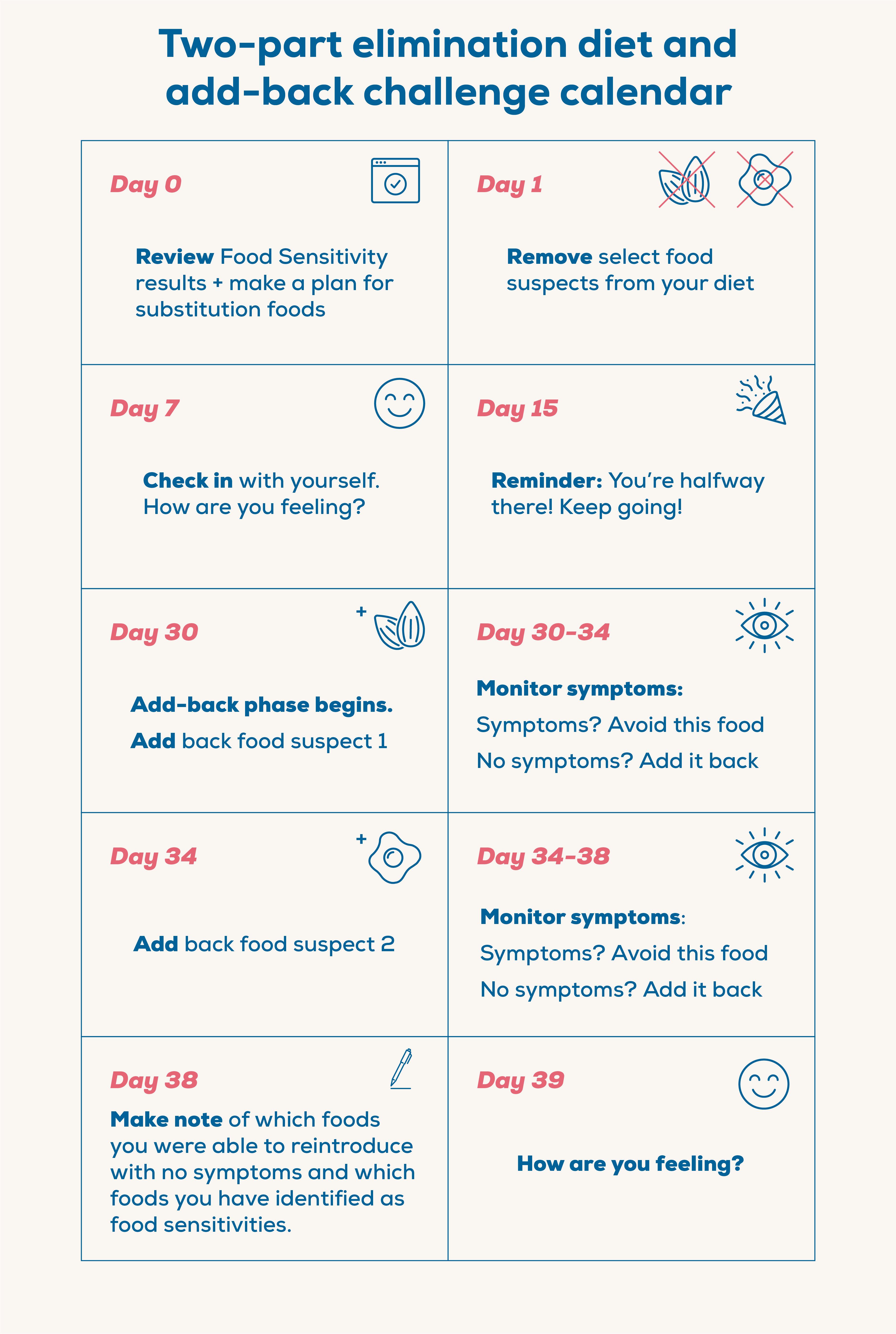
How to do a simple two-part elimination diet
Medically reviewed on July 15, 2021. To give you technically accurate, evidence-based information, content published on the Everlywell blog is reviewed by credentialed professionals with expertise in medical and bioscience fields.
Table of contents
Wondering whether certain foods you eat could be contributing to uncomfortable symptoms you feel? A Food Sensitivity Test paired with a two-part elimination diet is a dynamic duo that can help you identify potential problematic foods.
If you’re not familiar with a two-part elimination diet, it’s when you temporarily remove specific foods that you suspect could be causing symptoms (part one). And after 30 days, you then gradually reintroduce the “suspect foods” back in. We call this part the add-back challenge (part two).
The goal? Help pinpoint which foods are making you feel bad. The process is simple and you can totally do it. Read how below!
Two-step prep
Food Sensitivity Test Before beginning your two-part elimination diet, you can start by taking a Food Sensitivity Test to get a personalized list of "suspect foods" based on IgG antibody reactivity levels (IgG antibodies are a part of your immune system). These results can guide which foods you could possibly start with.
Food Journal When you are doing any sort of two-part elimination diet, it’s a smart idea to have a food journal on hand to record when you cut or add back foods and any symptoms you notice. There are several benefits of keeping a food journal, and diligently taking notes can give you a better idea of what foods could be causing your uncomfortable symptoms, so grab a journal. We have a resource on how to use one here. If you like to track everything on your device since you’re always on the go, there are handy apps like MyFitnessPal and other tools for food journaling.
Now, you’re ready to start the two-part elimination diet!
Step 1: Eliminate food suspects
This phase requires removing potentially problematic foods from your diet—foods that may be connected to the symptoms you’re feeling or foods you have high or moderate reactivity to based on your Food Sensitivity Test results.

You’ll remove each food for 30 days. The number of foods to remove at first can vary, and in some cases less may be more, but ultimately, it is encouraged to maintain nutritional balance during the elimination phase—which is why it’s important to plan ahead and decide what foods you can use as substitutions.
We have a list of food swaps with examples of foods or food groups that may be considered for the elimination phase here.
Step 2: Reintroduce food suspects
After 30 days, you’ll start the reintroduction, also known as the add-back phase. You’ll slowly start to reintroduce eliminated foods back into your diet.
For example: let’s say you removed almonds from your diet and replaced them with cashews. At this point, you can begin to add foods with almonds back into your everyday diet. It’s helpful to wait 2-4 days before adding back another food you’ve eliminated. This prevents overlap of reintroductions, which if a symptom is observed, can make it super hard to tell which food may be the culprit.
Each food is reintroduced one at a time so you can monitor for symptoms that might be associated with that food. Adding too much too soon will make it difficult to identify the culprit. If you don’t observe a flare-up of your symptoms, that food is not likely to be a culprit and can be resumed as part of your diet. Make sure to write this down in your food journal. This reintroduction phase continues until you’ve added back each food in isolation.
Check out this example calendar for an overview of the timeline!

The entire process—including the elimination phase and the reintroduction phase—can vary in duration, depending on the number of foods that are removed and that need to be reintroduced. It’s helpful to have a positive frame of mind and be as patient as possible. It can also help to hone in on the foods that were flagged in your results that you haven’t investigated before, that way you’re not doing duplicate work. You’ve got this!

Related content
How to use a food elimination diet to discover your food sensitivities
How to keep a food journal: essential tips to discover food sensitivities